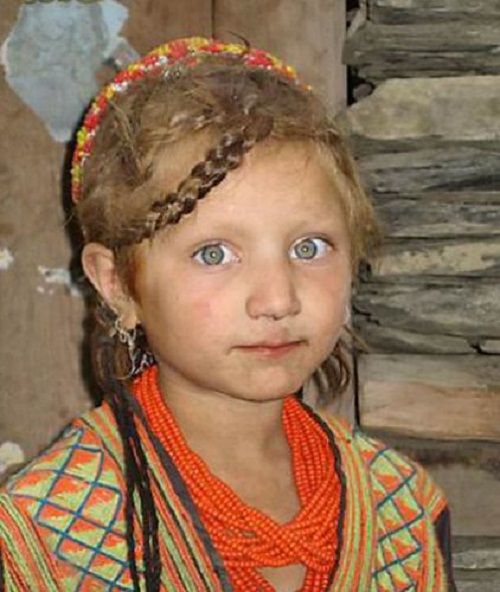Developing and full of plans Afghanistan of 1960s
Developing and full of plans Afghanistan of 1960s
Afghanistan is often called a medieval country. Many people consider Afghanistan a country without Government, where chaos is literally embedded in the rocks and hills. But Afghanistan has not always been like this. Once women here made careers in medicine, went to the movies and entered universities of Kabul. Factories in the suburbs produced fabrics and other products. There was law and order, and the Government could carry out major infrastructure development projects, such as building hydroelectric power stations and roads, though not without outside help. Among ordinary people was a hope for the future that education will open up new opportunities. All this was destroyed by 30 years of war.
Campus of the University of Kabul, virtually unchanged since then. People have changed. In the 50 ‘s and 60’s students preferred the Western style of dress, and young people of both sexes communicated relatively freely.
Today, women hide the face and most of the body, even in the capital. After only half a century, men and women live in different worlds.
In the 50’s and 60’s women could build a career in areas such as medicine. Today, schools that provide education for women are the target of frequent attacks.
Early education is highly valued. If you went to school and get good grades, you had the chance to get a college degree, maybe even study abroad, become part of the middle class. Today, people became more cynical. They don’t see the connection between education and a better life. Instead, they see that those who have attained power and wealth, have achieved this.
The incubator in the Hospital of Kabul in 60-ies is very different from what can be seen now. Now two premature babies are in the incubator, and the hospital lacks of equipment. In the 1960-ies almost half of the Afghan population have access to health care, now they are only a few. Today hospitals are overcrowded, and one of four children does not survive his fifth day of birth.
Production of vaccine research center in Kabul in the 1960-ies. Today, medical services are limited to several factors, including a lack of electricity. Less than 20% of Afghans have access to electricity.
Once the Central Government of Afghanistan held various development programs of country life, including the one that is shown in this photo: nurses have been sent in jeeps to remote villages to treat people from diseases such as cholera. Now just because of the security problems it is impossible. Government health workers are often attacked by militant groups who want to create unrest and terror in society.
Once in Afghanistan there were boy-and-girl scouts. In the 1950’s and 1960’s similar organizations were popular in the United States: boys and girls in primary and secondary schools learned about nature, campsite and public security.
Light and medium industries, such as this plant in a suburb of Kabul, once had high hopes for the Afghan economy. But today, it can’t work without electricity. In Afghanistan there are now only small workshops, the largest exports of Afghanistan has now become the opium.
Germany helped Afghanistan build its first major hydroelectric station (pictured) in the early 50’s. At that time it was a work of art. Now it still works, but, unfortunately, over the past eight years, the Government of Afghanistan has not built a single power station. The only major government project is completed expansion of the transport line to Uzbekistan.
Before in Afghanistan there were light and medium industries such as the garment factory in a photo that was brought the newest sewing equipment. Then there was the sense that Afghanistan has a bright future – its economy was booming. Then most of the cotton, processed on a similar plant, was reared by hand. But 30 years of war have destroyed industry and supply chain.
Compared to the 50-and 60s receptacle years fewer women now work outside the home, and their appearance is much more conservative than what you see in this photo.
The radio in the 60-ies – world and local news, music, jokes, political debates and even children’s shows. Radio Kabul (whose old offices you see in this photo) started in the 1930’s.
Afghanistan with lots of private radio stations, satellite and television programs. This is a real boom. Today access to radio and TV depends on electricity and, therefore, their audience is limited. Only a few families have generators that can be used to get access to electricity.
During the annual independence day of Afghanistan Kabul for nine days glittering with lights at night, in late August and early September in the 60-ies. Now at night it’s dark. Almost no lights in the streets, the streets are empty, the nightlife is out of the question.

Today, furniture stores, like this one, is a real rarity. Most of furniture is manufactured outside Afghanistan, and only a small percentage of Afghans has good furniture in their homes
The level of education of administration of Kabul now is much lower than 50 years ago, when this photo was taken. Back then, most officials were masters or PhDs. Western style of dress was the norm. Today the Assembly Government in Kabul – men with long beards, turbans and traditional flowing robes.
Developing and full of plans Afghanistan of 1960s
The once strong and active Afghanistan defense force is now a history. After the Soviets left Afghanistan, Pakistan has destroyed the country’s armed forces. Since the civil war of the 1990’s, constant pressure from the Taliban and the intervention of the United States, the local security forces is very hard to organize, even considering that security remains a major problem in the country.
bigpicture.ru/?p=70000




























